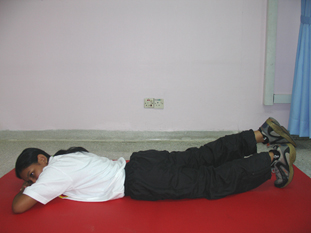1. What is fitness?
Fitness is one’s physical state of being able to effectively carry out the activities of daily living, take part in a sporting or recreational activity and still have reserve energy for emergencies.
Fitness can be improved with appropriate exercises.
Total physical fitness is recognized by its 11 components. Of these, five are health related components and the other six are skill related components.
2. What are the different components of fitness??
| Cardiovascular endurance (Aerobic fitness) | This is the ability of the heart to keep going efficiently for long duration during activities that are demanding, e.g. jogging, running or swimming. |
|---|---|
| Body composition | This refers to quantification of the major structural of the body; muscle, bone and fat. |
| Muscular strength | This is the amount of strength in a muscle group to cope with a specific action. |
| Muscular endurance | The ability of a group of muscles to keep going in a given period of time (muscle stamina). |
| Flexibility | The ability to bend and move smoothly and be able to perform movements in their full range. |
The other six components are:
- Agility
- Balance
- Speed
- Reaction time
- Coordination
- Speed
The components that matter the most in physical fitness are cardiovascular endurance and body composition.
3. What is exercise?
Exercise is any physical activity or recreation which is structured, planned and repetitive, carried out to improve the status of health and level of fitness.
4. What kinds of exercises are necessary to develop the respective
components of fitness?
- To develop cardiovascular and muscular endurance, you will need to perform Aerobic exercise
- To improve muscle strength, Strength training or weight training will be required
- To improve flexibility, Stretching exercises will be needed. Yoga is a good activity to improve flexibility
- Body composition will also improve with aerobic exercises
- To improve the skill related components, specially designed exercises will be required. These exercises are specific and are included in sports training by the coach
Aerobic exercises are activities that are performed continuously to sustain a desired heart rate of not less than 120 beats per minute for at least 20 minutes.
 |
Strength training Stretching exercises are strongly recommended after every physical activity. Specific muscles or muscle groups are slowly stretched all the way. |
A mild discomfort or tightness may be felt but not pain. The stretch should be held static for not less than 15 seconds (15-30). Do not bounce while stretching and do not hold your breath.
5. What should an exercise routine be like?
- Start with a warm up exercise. This can be:
- Light jogging or running for 5 to 10 minutes
- Swimming two to three laps at a very comfortable pace
- Cycling for 5-10 minutes at low speed
- This should be followed by stretching of the specific muscles in use
- The third part of the routine is performing the selected activity at an aerobic phase for about 30 to 40 minutes
- After the aerobic phase, gradually slow down your pace to lower your heart rate
- Some strength training exercises are then performed to improve muscle strength
- The routine is completed with stretching exercises of all the major muscle groups
To achieve the benefits of exercise you should ideally remember the FITT principle and exercise regularly; at least three times a week.
6. What is the FITT principle?
F – Frequency of doing your exercises.
I – Intensity as determined by the heart rate at which you exercise.
T – Time spent on your aerobic phase (must be at least 20 min to be effective).
T – Type of exercise is important. Different types of aerobic activity are recommended.
|

|
|
 |
|
 |
|
 |
|
 |
|
 |
The above exercises are recommended to be done in sets. Each exercise or movement is known as one repetition. Each set is to have 5-10 repetitions of each movement. The numbers of repetitions and sets depend on your ability to perform.
You can progress by either increasing your sets or the number of repetitions in each set. Do not progress in days but in weeks. Allow your body time to build it.
7. How do you know your heart rate?
See the Targeted heart rates
8. What are some of the activities you can choose from to improve your fitness?
You could choose from:
- Jogging
- Games such as Futsal, Football, Hockey, Badminton
- Hiking
- Wall climbing
- Taking part in organized runs
- Cycling
Any form of physical activity done regularly (and enjoyably) may be suggested. You should start slow, with lower intensities and frequencies and increasing gradually as you feel comfortable.
| Last Reviewed | : | 27 April 2012 |
| Content Writer | : | Mr. Daaljit Singh a/l Harbachan Singh |
| Reviewer | : | Dr. Thiyagar Nadarajaw |








